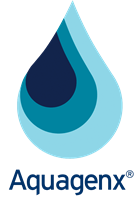“Semi-quantitative estimation of Escherichia coli levels in public drinking water sources in northern Haiti”
Prior research in Milot, Haiti documented that public water sources are commonly fecally contaminated, as indicated by the presence ofEscherichia coli. However, the degree of contamination was not assessed. In this study, the degree of fecal contamination in public drinking water sources was determined. Further, the usefulness of sanitary inspection surveys to predict fecal contamination was evaluated. A convenience sample of public water sources was tested using a semi-quantitative assay, which estimates the most probable number (MPN) of E. coli/100 mL of water. Each source was evaluated using the World Health Organization sanitary inspection score and classified as improved or unimproved.
Sixty-three water sources were tested, of which 27 (43%) had <1 MPN/100 mL, 19 (30%) were contaminated from 1 to 100 MPN/100 mL, and 17 (27%) were contaminated with >100 MPN/100 mL. Some improved water sources were contaminated with >100 MPN/100 mL. The sanitary inspection score did not distinguish between sources that were and were not contaminated with E. coli. In Milot, Haiti, public water sources can be highly contaminated with E. coli. Since neither the categorization of a water source as improved or unimproved nor the sanitary inspection score can predict contamination, routine microbiological testing is justified.
Call Us
1+919-590-0343
Copyright ©2016 Aquagenx, LLC
All Rights Reserved

